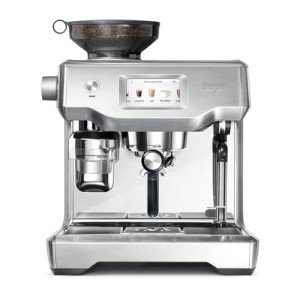The Art of Italian Espresso Machines: A Brewed Tradition
Italian espresso machines are not simply home appliances; they are an important part of Italy's rich coffee culture, representing a mix of artistry, engineering, and design. Coffee enthusiasts worldwide recognize the value of high-quality espresso, a staple of Italian life and cuisine. This post checks out the history, mechanics, types, and aspects to think about when buying an Italian espresso machine, reflecting the depth of this beloved drink and its brewing methods.
History of Espresso Machines
The espresso machine's evolution go back to the early 20th century in Italy, where coffee was not simply a beverage but a vital social routine. The initial attempts to brew espresso begun with easy, stove-top models, gradually developing into complex machines that could replicate the best brew.
- 1901-- The First Espresso Machine: The very first steam-powered espresso machine, called the "Ideale," was established by Luigi Bezzera. This machinery marked a turning point in espresso developing.
- 1938-- The Lever Machine: The introduction of the lever machine made it much easier to manage the pressure utilized in espresso extraction, boosting flavor consistency.
- 1947-- The Automatic Machine: Reaching more consumers, Gaggia introduced the first automatic espresso machine, additional popularizing espresso bars.
- 2007-- The Digital Age: Technological advancements caused the birth of totally programmable machines, allowing users to tailor their developing settings to achieve a personalized coffee experience.
Key Features of Italian Espresso Machines
Italian espresso machines embody precision, workmanship, and innovation. Here are some key parts that highlight their significance:
| Feature | Description |
|---|---|
| Boiler Type | Identifies how heat is generated and kept. Home Use Espresso Machines consist of single boiler, dual boiler, and heat exchanger. |
| Group Heads | Where the coffee is brewed; commercial machines typically have numerous group heads for efficiency. |
| Pressure Control | Vital for achieving the ideal espresso; most machines run at 9 bars of pressure. |
| Frothing Capabilities | The steam wand permits milk frothing, important for beverages like cappuccino and latte. |
| Build Quality | The materials utilized (stainless steel, brass, etc) influence resilience and heat retention. |
Kinds Of Italian Espresso Machines
Selecting the ideal machine depends upon user choices, budget, and meant use. Below are the main kinds of Italian espresso machines:
Manual Espresso Machines
- Pros: Offer complete control over the developing process, permitting a tailored touch.
- Cons: Require skill and practice, can be labor-intensive.
Semi-Automatic Machines
- Pros: Provide a balance between automatic and manual procedures; users manage water circulation.
- Cons: Can have a steeper knowing curve than completely automatic machines.
Totally Automatic Machines
- Pros: Simplify the brewing procedure with push-button operations; suitable for beginners.
- Cons: May compromise a few of the nuances of manual developing.
Super-Automatic Machines
- Pros: Grind, tamp, brew, and froth immediately; convenient for hectic way of lives.
- Cons: Less control over the brewing variables, capacity for a less authentic espresso experience.
Buying Guide: Factors to Consider
Choosing the ideal Italian espresso machine can be overwhelming, but considering the following aspects can streamline the decision-making procedure:
- Budget: Italian espresso machines vary from affordable to high-end models, so set a budget upfront.
- Usage Frequency: Evaluate how often you will use the machine; day-to-day users may desire a more resilient alternative.
- Area: Measure your cooking area or counter area; some machines can be large and need enough clearance.
- Upkeep: Consider ease of cleansing; machines with detachable parts or integrated cleansing features may minimize maintenance.
- User Skill Level: Beginners might prefer fully or semi-automatic machines, while knowledgeable baristas can handle manual machines.
- Brand Reputation: Research brands known for quality, such as Breville, Gaggia, and La Marzocco.
Popular Italian Espresso Machine Brands
Italian workmanship is renowned for producing a few of the best espresso machines worldwide. Here are top brand names worth considering:
- Gaggia: Known for its home espresso machines and cost.
- La Marzocco: An exceptional brand understood for its commercial-grade machines and innovative innovation.
- Rancilio: Renowned for its resilient build and professional-quality machines appropriate for home and commercial use.
- Sage/Breville: Offers advanced functions and user-friendly designs, perfect for both amateurs and lovers.
Frequently asked questions
What is the difference in between espresso and regular coffee?
Espresso is a focused coffee brewed by requiring hot water through finely-ground coffee under pressure. It has a thicker consistency, richer taste, and higher caffeine concentration than routine coffee.
Can I make milk-based beverages with an espresso machine?
Yes, numerous Italian espresso machines come with a steam wand to froth milk for drinks like coffees, lattes, and macchiatos.
How frequently should I clean my espresso machine?
Regular maintenance is vital. Usually, an extensive cleansing is suggested every couple of weeks, while descaling must be done every 1 to 3 months, depending on water solidity.
What is the ideal pressure for brewing espresso?
The perfect pressure for developing espresso is around 9 bars. This pressure guarantees the optimal extraction of flavors from the coffee grounds.
Are more expensive machines worth the investment?
Higher-end machines typically utilize much better products and innovation, offering improved toughness and more consistent outcomes. For serious coffee enthusiasts, purchasing a great machine can elevate the espresso experience significantly.
Italian espresso machines are much more than mere brewing gadgets; they are an event of a cultural tradition that has affected coffee intake worldwide. With different models available to fit any user's requirements-- varying from novices to skilled baristas-- there is an Italian espresso machine perfectly fit for everyone. As you embark on your espresso journey, comprehending the history, mechanics, and options will enhance your experience and gratitude for this time-honored beverage. Whether you seek to recreate a café ambiance at home or improve your brewing technique, these machines are capable of delivering unforgettable cups of espresso adorned with the rich history of Italian coffee culture.

